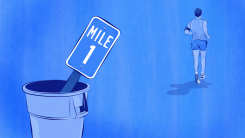Why ’75 Hard’ Is the Worst New Fitness Trend

A new year means it’s time for a new you—that’s what I’m told, anyway. You’ve cleared your schedule, your motivation is at an all-time high, and now all you need is a plan for becoming a better version of yourself. And for some reason, the plan that a lot of people are choosing this year is one of the dumbest fitness challenges ever invented: 75 Hard.
I’ve previously explained how to tell when a fitness challenge is a complete waste of time, and 75 Hard checks every box. It sets you up for failure and blames you for failing; its rules are based on what is hard to do rather than what will pay off in the end; and it’s ultimately a not a fitness or mental toughness program at all, but a marketing vehicle for one guy.
What are the “rules” of 75 Hard?
The basic idea is this: Tor 75 days, you’re supposed to do these five things every day:
-
Follow a diet. “This can be the diet of your choice, but it must be a structured plan designed with a physical improvement in mind.”
-
Complete two 45-minute workouts per day. These can include walks or restorative yoga. One must be outdoors no matter the weather.
-
No alcohol or cheat meals.
-
Take a progress photo every day.
-
Read 10 pages of a book; audiobooks don’t count.
If you go to the 75 Hard website, you won’t see these rules. You’re supposed to get on an email list to have them sent to you. In fact, if you do 75 Hard as directed, you’ll start by giving Andy Frisella (its creator) your email address, listening to his podcast, buying his $29 book, downloading his $7 app, and joining his Facebook group.
Oh, and by the way: If you mess up, you have to start again from Day 1.
What 75 Hard gets right
I’m going to be generous here. Any plan to exercise and eat better is going to have some potential benefits, although these don’t actually come from 75 Hard itself. You’ll note that the exercise program is “do two workouts” and the diet plan is “follow a diet.” In other words, you give yourself an exercise and diet plan, while Frisella sits back and takes the credit.
Some potentially good things that can come from following 75 Hard:
-
You carve out the time for two workouts a day; this builds a habit.
-
Since you’d burn out doing two hard workouts a day, every day, you’ll learn that walking, yoga, and other recovery-oriented movement can have a place in your routine.
-
You have to choose your own plan for the workouts and the diet; this means making decisions and sticking with them, instead of just having vague intentions.
-
Reading books is fine.
There, I’ve been as charitable as I can be. Now let’s talk about what 75 Hard gets wrong.
75 Hard is strict for no reason
Look, when I follow a workout plan, I commit. If I’m going to do a tough six-day-per-week program (like I did this past summer) I’m going to do every workout, even the ones that are labeled as optional. I ran track repeats in the rain, I showed up to the gym when I was tired, and when there was too much wildfire smoke in the air to run outdoors, I did that day’s interval workout on a spin bike.
But why did I stick to the plan? Because I knew it would make me stronger. I hit my first-ever 101-kilo front squat (222 pounds) during that program. I finished with a killer work capacity that set me up for a great training cycle after that–ultimately leading to a PR (personal record) total in my end-of-year weightlifting meet. I did hard things because the payoff was going to be worth it.
This is where 75 Hard feels like it was designed by an alien or a robot. Athletes work hard, so let’s make people work hard. Athletes follow a schedule, so let’s make people follow a schedule. But it’s like a car with no engine. Might look OK from the outside, but there’s nothing inside to power it.
Frisella patches over this major plot hole mainly by yelling at you. You have to follow the rules, not because there is any reason to, but because the rule is you have to follow the rules. And if the rules don’t work for you? It’s all your fault.
For example, the introductory email says this:
You will be tempted to cheat and compromise. You will not be tempted by me … you will be tempted by yourself.
Um, you’re the one setting the rules, Andy. If I’m “tempted” to do something that is a normal or healthy part of life, and you’ve said I can’t, who exactly has turned that normal and healthy thing into a temptation?
When you make a small compromise to yourself, it engrains that decision pattern in your life. You subconsciously tell yourself that is OK and create a pattern of compromise across every single area of your life. It rounds-off the sharp corners of what should be an exceptional life.
Once again, these promises are from Andy Frisella, to Andy Frisella, but he wants you to be the one doing the work.
This framing of “compromise” assumes that what you are intending to do is something important, that should not be compromised on. But they’re just a bunch of dumb rules. They’re not rules that will get you toward any particular goal, other than the goal of becoming “a person who did 75 Hard and is proud of it.” Which is fine if you’re into that, but you’re just as likely to get frustrated with the rules and blame yourself.
“Progress” photos make you obsess over your body
75 Hard requires you to take progress photos every day. This makes you focus on the appearance of your body, both as an outcome of the challenge, and as a day-to-day obsession. Literally. If you miss a day’s photo, you’ve broken the rules and have to start over.
The progress photos also contribute to other people being drawn into the challenge. The marketing page for 75 Hard has nine different people’s before-and-after photos. By posting yours on social media, you’re basically advertising the challenge, and keeping the focus on body image. For a challenge that’s supposed to encourage “mental toughness,” this sure seems like a thing that’s going to fuck with a lot of people’s heads.
Drinking a gallon of water is silly and potentially dangerous
Another of the rules is that you have to drink a gallon of water every day. For a bigger person, as a total of fluid intake for the day, that’s not too extreme. But then come the caveats. Frisella has reportedly said that:
-
This doesn’t include fluids from food.
-
This doesn’t include any other beverages, including flavored water.
-
If you need or want to drink electrolytes to replace fluids lost in all those workouts, sorry, (flavored) electrolyte drinks don’t count.
He does add the caveat that you may drink a different amount of water if directed to do so by a medical professional. Pretty strange for the challenge to position “because 75 Hard says so” just underneath medical advice, but superseding literally any other reason you might have for following these rules, such as noticing that they are stupid.
There is no health benefit that you will acquire from drinking a gallon of water that you would not also get from consuming half a gallon of (say) water, Diet Coke, coffee, and soup combined.
Drinking excessive amounts of water can be dangerous, especially if you’re getting toward the end of the day, realize you aren’t even close to your target, and chug the rest at once. Hyponatremia, or water intoxication, is a real thing, and the risks increase when you drink a lot of water all at once, despite not being thirsty, because somebody has told you you must. In one case study, a child ended up in the hospital after a parent made her drink over half a gallon in the space of a few hours; this was investigated as child abuse. Cases of healthy people dying from water intoxication are rare, but they exist.
Try these better ways to improve your fitness in 75 days
If only we could separate the good parts of 75 Hard from the bad! Oh, wait—the good parts amount to “pick an exercise program and follow it,” so that’s an easy fix.
(Ironically, the 75 Hard website both says to “consult your physician or other health care professional before starting 75 HARD™ or any other fitness program” and then, on the same screen, “THIS IS NOT A FITNESS CHALLENGE.” Yeah, we can do better than that.)
Try an actual fitness program, one that lays out specific workouts and tasks, on specific days, to get you to a specific goal. You’ll finish the program stronger and fitter than you were before, ready to tackle a new challenge–not exhausted and ready to quit.
75 days is about 10 or 11 weeks. Here are some programs that fit the bill:
-
Hal Higdon’s “Spring Training” base-building plan for runners. It’s 10 weeks, with four runs and two strength training days each week. You get a time trial every other weekend to benchmark your fitness.
-
Couch to 5K, the classic program to gently introduce people to running. It’s also 10 weeks, and starts off with easy intervals. You’ll do three walk/run workouts each week. I have mixed feelings about how well this program actually works for beginners, but if you’re aware of the caveats, what the hell, go for it.
-
The Strength Athlete’s beginner powerlifting program. This is nine weeks long, with an optional four-week peak you can do at the end if you’d like to try a powerlifting meet (or do a “mock meet” on your own). You’ll lift four times per week. It’s for people who have some experience with the squat, bench press, and deadlift, but who haven’t trained it extensively.
-
This Reddit-famous frankenprogram, which combines the Mag-Ort deadlift program, portions of the GZCL program for squats, and something called “Deathbench” to increase your bench press. It’s 10 weeks long, five days per week, and is meant for experienced lifters who want an intense challenge.
Those are just a few examples; there are plenty of 10-week (or eight-week, or 12-week) programs out there for various sports and activities. Pick one, mark the workouts on your calendar, and pair it with appropriate nutrition to support your goals. In 75 days, you’ll be a stronger lifter or a more capable runner, no pointless suffering required.



